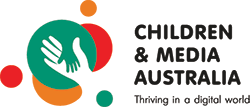Bad Genius

Short takes
Not suitable under 14; parental guidance to 14 (language, themes)

This topic contains:
- overall comments and recommendations
- details of classification and consumer advice lines for Bad Genius
- a review of Bad Genius completed by the Australian Council on Children and the Media (ACCM) on 15 April 2025.
Overall comments and recommendations
| Children under 14 | Not suitable due to themes and language. |
| Children aged 14 | Parental guidance recommended due to language. |
| Children aged 15 and over | Ok for this age group. |
About the movie
This section contains details about the movie, including its classification by the Australian Government Classification Board and the associated consumer advice lines. Other classification advice (OC) is provided where the Australian film classification is not available.
| Name of movie: | Bad Genius |
| Classification: | M |
| Consumer advice lines: | Coarse language |
| Length: | 97 minutes |
ACCM review
This review of the movie contains the following information:
- a synopsis of the story
- themes
- use of violence
- material that may scare or disturb children
- product placement
- sexual references
- nudity and sexual activity
- use of substances
- coarse language
- the movie’s message
A synopsis of the story
Lynn Kang (Callina Liang) is the kind of student elite schools can only dream of. She is brilliant in every avenue she pursues, she takes top marks in every subject, and she is musically gifted, athletically talented and can solve any problem put to her. She is hard working, obedient and driven to succeed, and it is these qualities that win her a full scholarship to a prestigious Seattle High School, which her father hopes will set her on a path to MIT. Lynn would rather pursue music at Julliard but doesn’t want to disappoint her father who has sacrificed everything in order for her to have the opportunities that he never did. On her first day of school, Lynn meets Grace (Taylor Hickson) and the girls soon become friends. Lynn begins to tutor Grace and risks everything to make sure that she passes an exam. Grace tells her boyfriend Pat (Samuel Braun) about what Lynn managed to do and Pat sees a way for everyone to improve their grades and for Lynn to make all the money she needs for Julliard. Under the guise of tutoring, Lynn develops a system to help classmates pass tests by tapping out a code of piano keys linked to the answers. When Pat’s father learns that Lynn’s ‘tutoring’ has improved his son’s grades, he makes a deal with her to help Pat pass the SATs and get into Columbia. Initially Lynn refuses, terrified of the consequences while also believing that the SATs are impossible to cheat on, but then she develops a plan. She just needs to convince Bank (Jabari Banks), another scholarship student, that they both deserve the same chance to make whatever future they want for themselves, regardless of what the rules say or what everyone else believes. Only one question remains: can they pull off the impossible?
Themesinfo
Children and adolescents may react adversely at different ages to themes of crime, suicide, drug and alcohol dependence, death, serious illness, family breakdown, death or separation from a parent, animal distress or cruelty to animals, children as victims, natural disasters and racism. Occasionally reviews may also signal themes that some parents may simply wish to know about.
Entitlement; Economic hardship versus Great privilege; Systematic racism; Manipulation; Disregard for rules; Academic fraud; Sacrifice and the cost of success.
Use of violenceinfo
Research shows that children are at risk of learning that violence is an acceptable means of conflict resolution when violence is glamourised, performed by an attractive hero, successful, has few real life consequences, is set in a comic context and / or is mostly perpetrated by male characters with female victims, or by one race against another.
Repeated exposure to violent content can reinforce the message that violence is an acceptable means of conflict resolution. Repeated exposure also increases the risks that children will become desensitised to the use of violence in real life or develop an exaggerated view about the prevalence and likelihood of violence in their own world.
There is some violence in this movie, including:
- A group of thugs attack Bank, grabbing his bike, beating him unconscious and throwing him in a rubbish bin.
- Lynn dives into traffic to retrieve a phone. She narrowly misses being run over.
Material that may scare or disturb children
Under fiveinfo
Children under five are most likely to be frightened by scary visual images, such as monsters, physical transformations.
In addition to the above-mentioned violent scenes, there are some scenes in this movie that could scare or disturb children under the age of five, including the following:
- Nothing further noted for this age group.
Aged five to eightinfo
Children aged five to eight will also be frightened by scary visual images and will also be disturbed by depictions of the death of a parent, a child abandoned or separated from parents, children or animals being hurt or threatened and / or natural disasters.
In addition to the above-mentioned violent scenes and scary visual images, there are some scenes in this movie that could scare or disturb children aged five to eight, including the following:
- There are a couple of intense chases scenes where Lynn and Bank are being pursued and everything hinges on their escape. The scenes are not scary but the stress is palpable and the scenes may be distressing for some viewers.
Aged eight to thirteeninfo
Children aged eight to thirteen are most likely to be frightened by realistic threats and dangers, violence or threat of violence and / or stories in which children are hurt or threatened.
- Nothing further noted.
Product placement
The following products are displayed or used in this movie:
- Venmo is mentioned.
Sexual references
- None noted.
Nudity and sexual activity
There is some nudity and sexual activity in this movie, including:
- Pat and Grace cuddle and kiss on multiple occasions. It is implied that they are sexually active.
Use of substances
There is some use of substances in this movie, including:
- A drug deal appears to be taking place in front of the store run by Bank’s mother. Bank calls the police on them after asking them to leave and they threaten him before departing.
- There are parties where everyone is drinking from red plastic cups. The use of alcohol is implied.
Coarse language
There is some coarse language in this movie, including:
- Fucked up
- Ass
- Shit
- Ass kicking
- Asshole
- Bitch
- Dick.
In a nutshell
Bad Genius is a heist thriller based on true events that inspired the 2017 Thai film of the same name. It highlights the inequalities of standardised tests and the pressure many students feel to perform, while encouraging moral reflection on choices and the consequences of actions. The film is best suited to audiences over the age of 14.
The main messages from this movie are that everyone deserves a chance to be successful, regardless of where they were born or how much money they have; and that, in the end, we all have to live with the choices we make.
Values in this movie that parents may wish to reinforce with their children include:
- Determination
- Resilience
- Resourcefulness
- Justice
- Creativity.
This movie could also give parents the opportunity to discuss with their children attitudes and behaviours, and their real-life consequences, such as:
- Cheating or engaging in academic fraud.
- Using others for your own personal gain.
- Believing that you are entitled to whatever you want simply because you are rich.
- Manipulating other people or situations to get what you want, regardless of the harm it causes.
Movie Review Search
Title:
Tip: Leave out the first A, An or The
Age suitability:
Selecting an age will provide a list of movies with content suitable for this age group. Children may also enjoy movies selected via a lower age.
About our colour guide
Content is age appropriate for children this age
Some content may not be appropriate for children this age. Parental guidance recommended
Content is not age appropriate for children this age
CMA thanks the Romeo family for its support

About CMA
Children and Media Australia (CMA) is a registered business name of the Australian Council on Children and the Media (ACCM).
CMA provides reviews, research and advocacy to help children thrive in a digital world.
ACCM is national, not-for-profit and reliant on community support. You can help.
ABN: 16 005 214 531
- Home
- Site Map
- Disclaimer
- © Children and Media Australia 2012 - 2025





